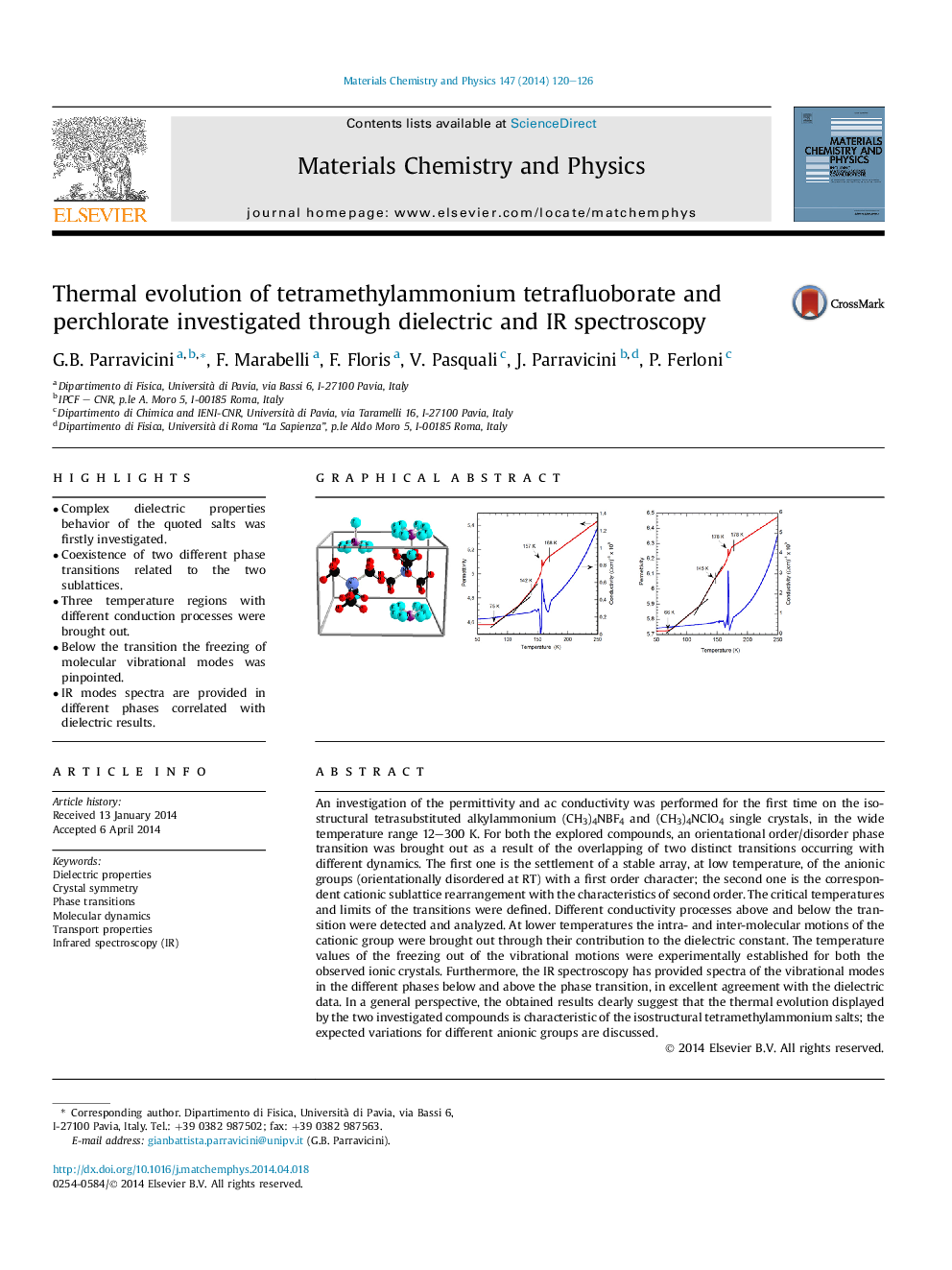| Article ID | Journal | Published Year | Pages | File Type |
|---|---|---|---|---|
| 1522094 | Materials Chemistry and Physics | 2014 | 7 Pages |
•Complex dielectric properties behavior of the quoted salts was firstly investigated.•Coexistence of two different phase transitions related to the two sublattices.•Three temperature regions with different conduction processes were brought out.•Below the transition the freezing of molecular vibrational modes was pinpointed.•IR modes spectra are provided in different phases correlated with dielectric results.
An investigation of the permittivity and ac conductivity was performed for the first time on the isostructural tetrasubstituted alkylammonium (CH3)4NBF4 and (CH3)4NClO4 single crystals, in the wide temperature range 12–300 K. For both the explored compounds, an orientational order/disorder phase transition was brought out as a result of the overlapping of two distinct transitions occurring with different dynamics. The first one is the settlement of a stable array, at low temperature, of the anionic groups (orientationally disordered at RT) with a first order character; the second one is the correspondent cationic sublattice rearrangement with the characteristics of second order. The critical temperatures and limits of the transitions were defined. Different conductivity processes above and below the transition were detected and analyzed. At lower temperatures the intra- and inter-molecular motions of the cationic group were brought out through their contribution to the dielectric constant. The temperature values of the freezing out of the vibrational motions were experimentally established for both the observed ionic crystals. Furthermore, the IR spectroscopy has provided spectra of the vibrational modes in the different phases below and above the phase transition, in excellent agreement with the dielectric data. In a general perspective, the obtained results clearly suggest that the thermal evolution displayed by the two investigated compounds is characteristic of the isostructural tetramethylammonium salts; the expected variations for different anionic groups are discussed.
Graphical abstractFigure optionsDownload full-size imageDownload as PowerPoint slide
